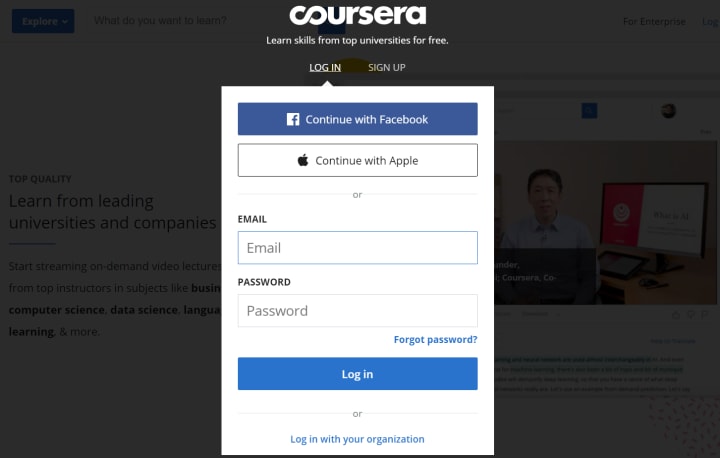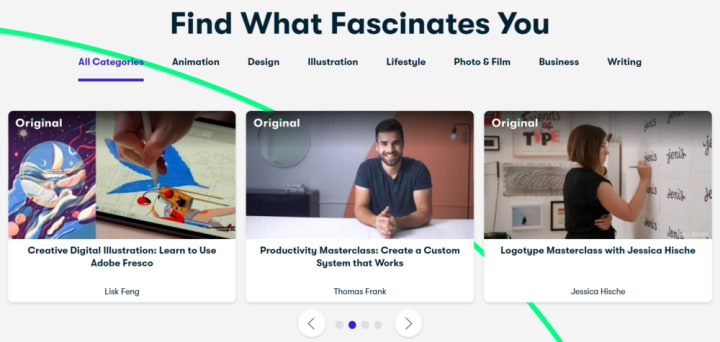Tips to start a successful e-learning website
We review why e-learning is on the rise and what functionality is needed for a great e-learning website.

The rise of online education is amazing, so now is the best time to start an e-learning website. Let’s take a closer look at the benefits of e-learning and what features are needed to make a great website that engages your audience.
For a start, what is e-learning?
E-learning (also known as electronic learning, distance learning, etc.) means getting knowledge without a physical presence in the classroom but through electronic gadgets with an Internet connection. E-classed can either go love or be pre-recorded. Famous e-learning platforms include Udemy, Udacity, Coursera, Skillshare, and many others.

The peak of popularity for e-learning
According to the forecasts made before the pandemic, the e-learning market should reach US$ 350 billion by 2025. However, it looks like the figures will be even more impressive now that the online education format has become especially relevant for people.
Main advantages of e-learning
- Learners save their time
There is no need to visit a physical classroom. Especially when the destination is pretty far, this saves tons of time.
- Learners save their money
E-learning is more affordable than traditional education. We should also note the absence of travel and accommodation expenses.
- The studies are flexible
It is usually possible with online learning to make your schedule to your liking. It’s easy to fit new knowledge acquisition into the busy life schedules.
- Safety, safety, and safety
No need to go to the physical classroom means safety and peace of mind in the times of the pandemic, which is crucial for many learners.
Tips to build an e-learning website
1. Choose your niche
You have a large choice of areas in e-learning. Online education websites can be versatile or industry-specific. What would you like to help people learn about? The choice of your niche will influence your further steps.
2. Get valuable content
Get high-quality educational content that your intended audience should love. You will benefit from cooperation with expert instructors, thought leaders, university teachers, etc.
3. Choose the monetization ways
Here are some of the most common ways e-learning websites make money:
- paid educational courses
- paid certificates of completion
- paid subscriptions
- premium accounts that include more options
- donations
- training programs for businesses
4. Decide on the essential features
E-learning websites may differ in functionality, but they are centered around these features:
- simple registration with a social sign-up option

- user profiles for students and teachers, each type with a particular set of fields
- handy search functionality (search bar with autocomplete, clear menu categories, filters by topic, price, course duration, language, etc.)

- block with recommended courses on the main page that will help your visitors get started

- a support chat that will help users resolve issues and get answers to questions
- a course page with full information about it

- course creation interface with easy editing and the options to upload additional materials in various formats
- rating and reviews from other learners

- on-site notifications and reminders about the key events based on a user’s preferences
- convenient admin dashboard to manage the site and track the activity of the participants
- secure and user-friendly payment options
5. Choose a platform
When choosing a platform to build an e-learning website, consider content management systems (CMSs). They are the optimal solution in terms of costs and flexibility. CMSs offer a good basis for a future website, which reduces the development time and cost. At the same time, they allow unlimited customizations, which can fulfil any business idea in the hands of a development team.
Wishing you an awesome e-learning website! You can also read a fuller version of this article at drudesk.com.
About the Creator
Enjoyed the story? Support the Creator.
Subscribe for free to receive all their stories in your feed. You could also pledge your support or give them a one-off tip, letting them know you appreciate their work.





Comments (1)
Hi Anna! Your article provides some useful tips to start a successful e-learning website, such as choosing a niche, creating engaging content, and marketing your platform. However, it does not cover some important aspects of developing an educational website, such as choosing the right technology stack, designing the user interface, and ensuring the security and scalability of your platform. If you want to learn more about these topics, you can check out this resource: https://www.cleveroad.com/blog/create-educational-website/ It offers a comprehensive guide on how to create an educational website from scratch.